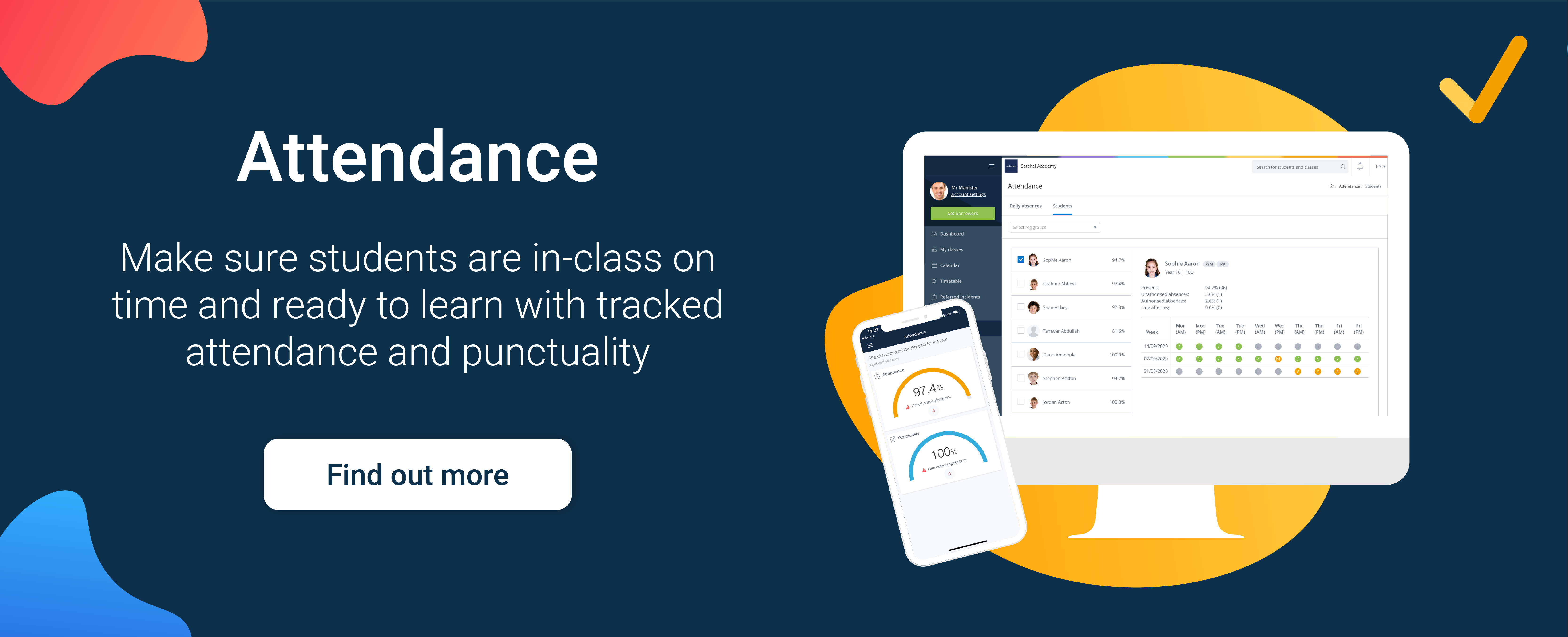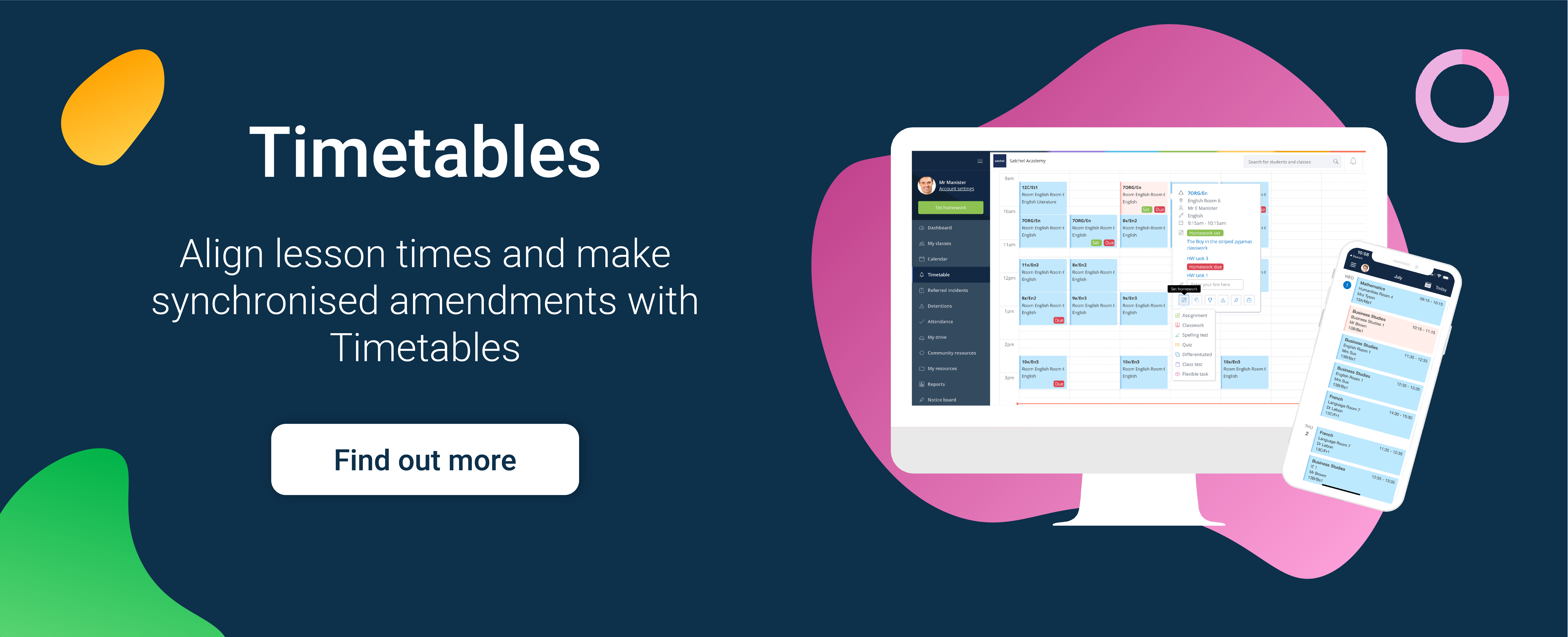Author: Ben Greenwood
Posted: 30 Oct 2020
Estimated time to read: 3 mins
Attendance has been more of a challenge than usual this academic year. School attendance plunged to 86% this week, after a period of relative stability at 90% between September and early October. This is mostly due to more students being asked to isolate themselves as a result of Covid.
But whilst fewer students are coming through the school gates, it doesn’t necessarily mean that they aren’t engaging in lessons. Schools are now legally required to provide distance learning to those who aren’t able to come to school.
Across the country, isolating students are waking up and attending virtual lessons on digital timetables. Taking part in the school day from their kitchen table has become the norm for many students. It means they can stay safe and protect their classmates without losing out.

A new definition of attendance
Students no longer have to be physically present in class to take part in the school day, so why don’t we account for this in registration? With almost all schools using digital registration systems, schools should - in theory- be able to align their virtual and physical registers to get a better idea of student attendance.
On the other hand, students who are self isolating and still learning need structured days to continue to learn and keep up with the rest of the class. In the most basic sense, a morning registration alone ensures that students are logging in on time and participating, just as their classmates are at school
Having a set ‘log-on time’ and periodical registrations during the day, just like in physical lessons, will also help to bring a sense of normality to school days spent in isolation. It’s just one way of bringing together students in class and at home, but it can have a huge impact on attainment and mental health.
Aside from the benefits to students, this also gives schools a chance to redefine their attendance policy to reflect their new circumstances. Making sure that their school attendance rate includes those that are consistently logging in on time during isolation shows
How can schools create this virtual environment?
Creating a virtual classroom is easy in a world of abundant edtech. All you need is a computer with a webcam and a safe and secure video lesson host (like Zoom). But, building a school-like environment online, with the motivational cues and collective feeling of a classroom isn’t quite as easy.
Teachers work extremely hard to cultivate an online environment that makes isolating students feel part of the wider student body. Whether it’s videoing lessons, hosting quizzes between class and isolating students, or setting online work for both isolating and in-class students. To have these efforts ignored by the school’s attendance data can feel like something of a kick in the teeth.
If schools take this into account and build the attendance of online learning into something with the same weight as physical attendance, students could feel more motivated to learn - and teachers more valued for their hard work.
- Have specialised attendance policy ready for isolating students
Ensure that there is a school-wide policy for isolating students when it comes to attendance. It’s obviously more difficult to ensure good attendance from home, but adding in communication with home should give students the ‘motivation’ needed to log into lessons on time!
- Take an oral register over Zoom
Have isolating students call out ‘here’ over Zoom (or your preferred video host) to retain a little of that classroom interaction. It also helps to ensure that students are actually present at their computer and not employing some creative evasion tactics.
It seems that with extended bouts of isolation, sometimes for whole year groups, becoming the norm, we should be thinking about how we can soften the edges between the physical classroom and the virtual one. When it comes to attendance, this means making online attendance just as important as physical attendance - making students’ learning experiences more consistent throughout the school year, no matter how disrupted that year has been. The transition from in-person classes to virtual learning has been taxing emotionally, mentally, and even physically. When it comes to attendance, this means making online attendance just as important as physical attendance - making students’ learning experiences more consistent throughout the school year, no matter how disrupted that year has been. Despite the uncertainties the pandemic has brought to our students, we have learned how to take care of their mental health better, and to give them the best we can offer. Satchel Pulse can be a helpful tool in that bridges the gap between students' and teachers' mental health needs.



